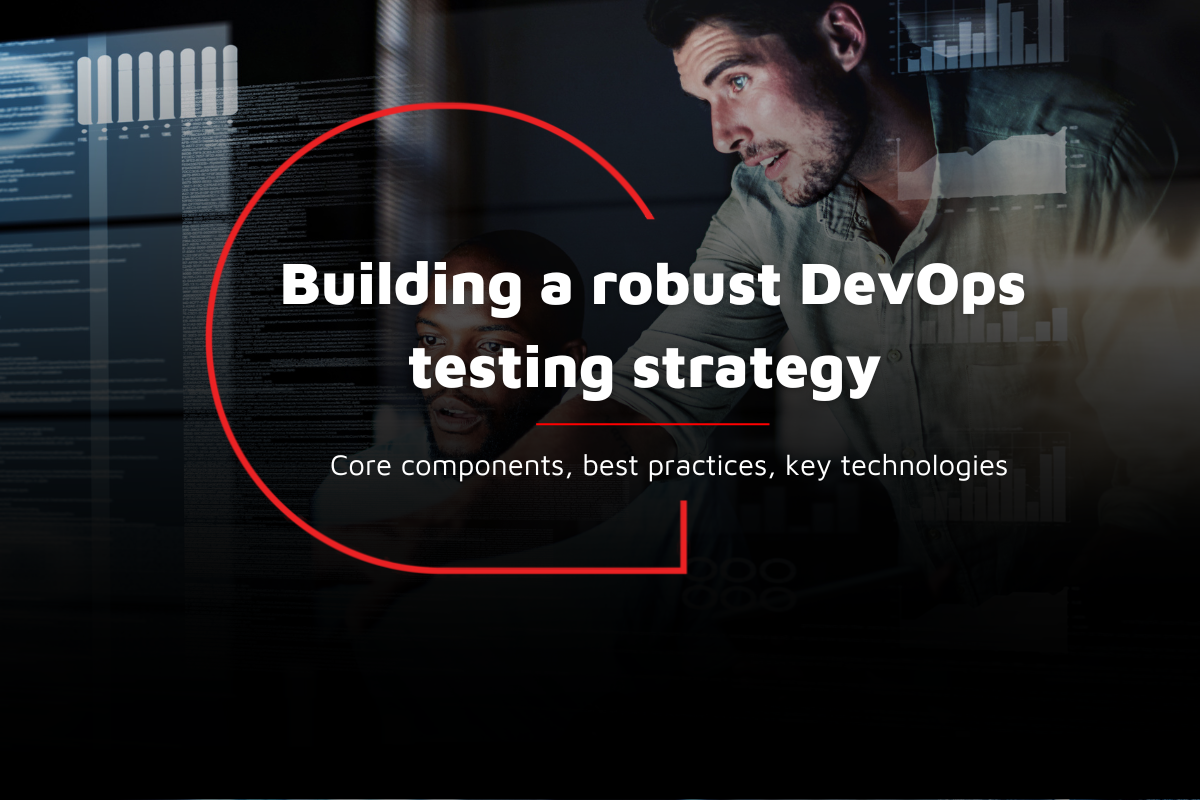Building a robust DevOps testing strategy – core components, best practices, key technologies
2 March 2023 | Noor Khan

A robust DevOps strategy has the pillars of DevOps at its core and they include communication, collaboration and automation. A successful testing strategy will support the build, test and release of software on a consistent, swift basis. Here we will look at building a robust DevOps testing strategy to ensure you can fully leverage the DevOps principles to make your software successful continuously.
What is the DevOps testing strategy?
Testing is a key stage of the DevOps life cycle and is the process where the software goes through robust testing to uncover any errors, bugs and underlying problems. Once tested, these errors are resolved to ensure that the software can be moved to the next stage of the life cycle which is deployment. The software will go through multiple rounds of testing, and it will be a continuous process as the software evolves and new features are added.
Core components of DevOps testing strategy
There is a core component of a good DevOps testing strategy, and they include the following:
Continuous testing
Continuity of testing is paramount, especially when adopting the DevOps approach. Without continuous testing, there is room for escaped errors, and delayed delivery of the software which would then result in unhappy clients or end users. Therefore testing continuously is key.
Automated testing
Manual testing is a resource and consequently cost heavy process and can present other challenges such as human error. Although manual may be part of your testing strategy it should be kept to a minimum. Automating testing ensures that testing can be more frequent and it significantly reduces the room for human error.
DevOps testing best practices
Sharing the responsibility of the testing
Testing should be the responsibility of the entire team, this will include business users, software developers, DevOps engineers, and QA teams. This is in line with the DevOps pillar of collaboration and will result in a smoother result of the software ensuring all areas have been tested effectively.
Automate all testing types if possible
Automation should be the heart of testing to remove the burdensome manual tasks which are both time and resource-heavy. You may not be able to automate all tests, however, tests such as regression should be automated.
Parallel testing
Leveraging parallel testing can help save significant time to meet deadlines as you can run multiple tests at the same time. This can be ideal for scenarios when software teams are unsure of the functionality of the software across devices in the instance of an updated app or when software needs to be tested across a combination of browsers, operating systems and devices with automated browser testing.
Invest in advanced reporting
Investing in advanced reporting will gain access to data to ensure you are able to garner insights into the performance of your software.
DevOps testing technologies
There are a wide range of DevOps testing technologies that can be leveraged to build a robust DevOps testing strategy and they include:
- Nose test
- Smoke test
- Unit test
DevOps powered by Ardent
Ardent software engineering team have employed the DevOps approach to software development for many years in order to deliver ongoing excellence to our clients. Discover how we worked cohesively with a leading logistics company to improve their software product to meet the evolving requirements of the target market. If you are looking to take on the DevOps approach but do not have the resources or skills in-house, we can help.
Get in touch to find out more about how we can help you reap the benefits of speedy development, continuous innovation and a swift go-to-market.
Ardent Insights

Are you ready to take the lead in driving digital transformation?
Digital transformation is the process of modernizing and digitating business processes with technology that can offer a plethora of benefits including reducing long-term costs, improving productivity and streamlining processes. Despite the benefits, research by McKinsey & Company has found that around 70% of digital transformation projects fail, largely down to employee resistance. If you are [...]

Stateful VS Stateless – What’s right for your application?
Protocols and guidelines are at the heart of data engineering and application development, and the data which is sent using network protocols is broadly divided into stateful vs stateless structures – these rules govern how the data has been formatted, how it sent, and how it is received by other devices (such as endpoints, routers, [...]

Getting data observability done right – Is Monte Carlo the tool for you?
Data observability is all about the ability to understand, diagnose, and manage the health of your data across multiple tools and throughout the entire lifecycle of the data. Ensuring that you have the right operational monitoring and support to provide 24/7 peace of mind is critical to building and growing your company. [...]






